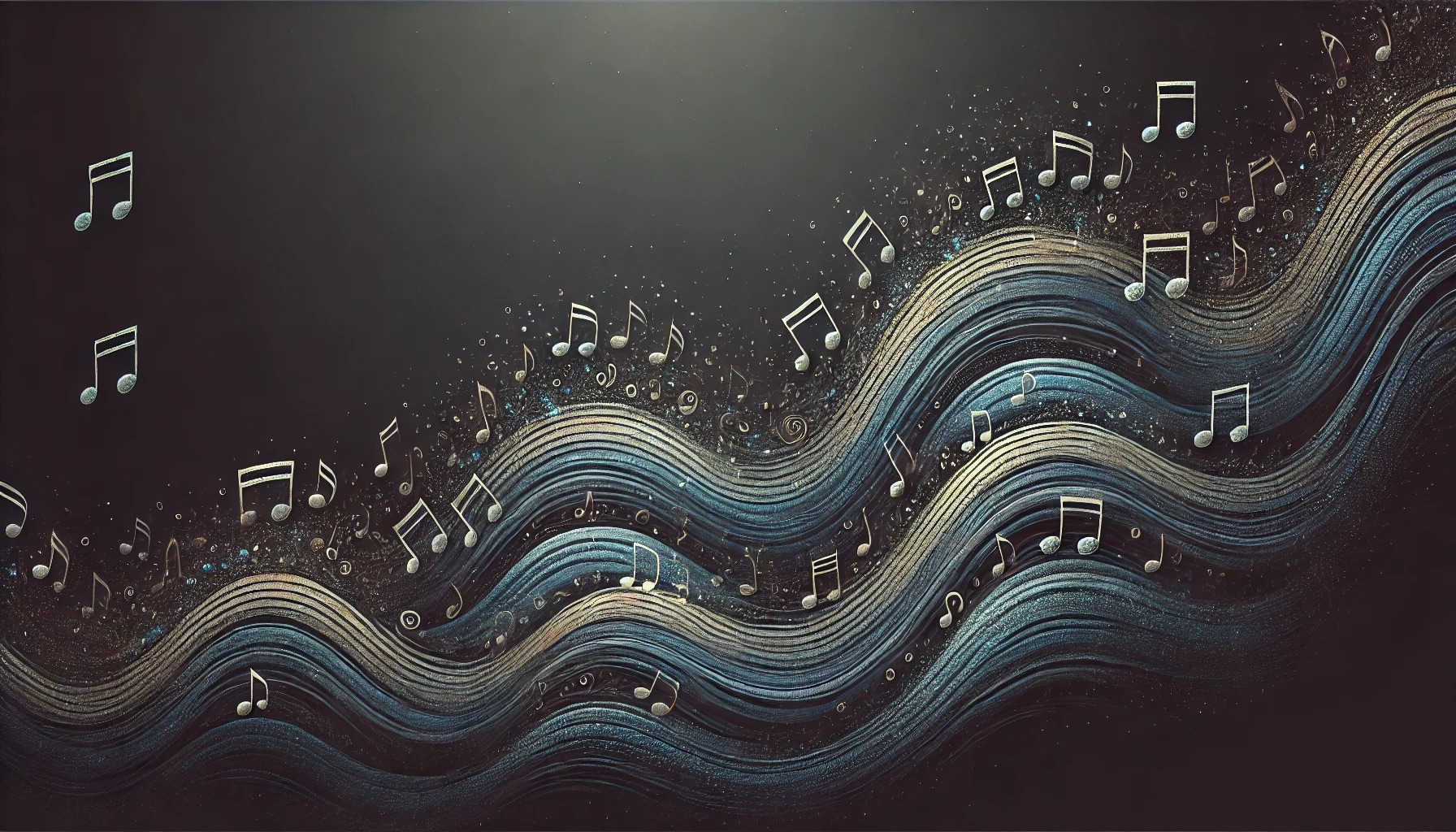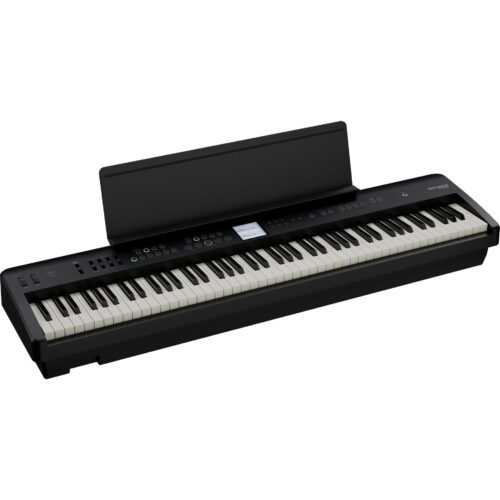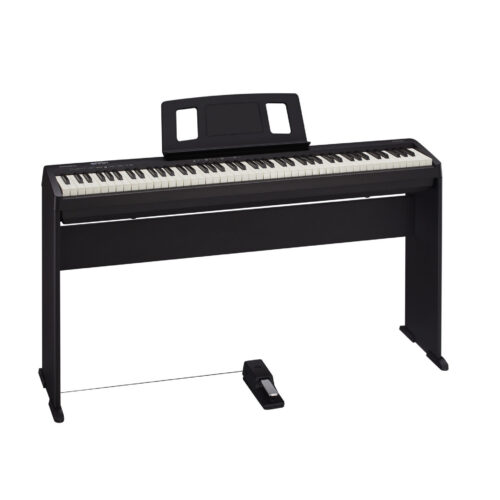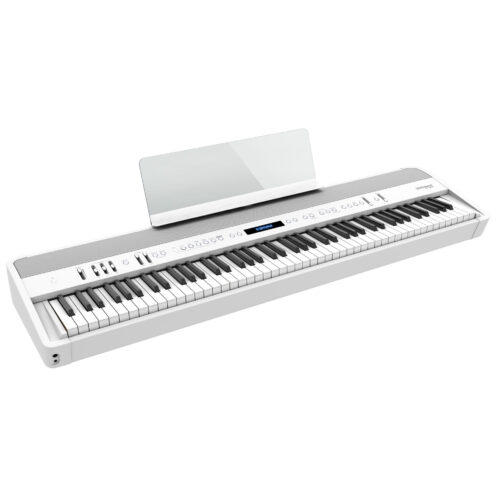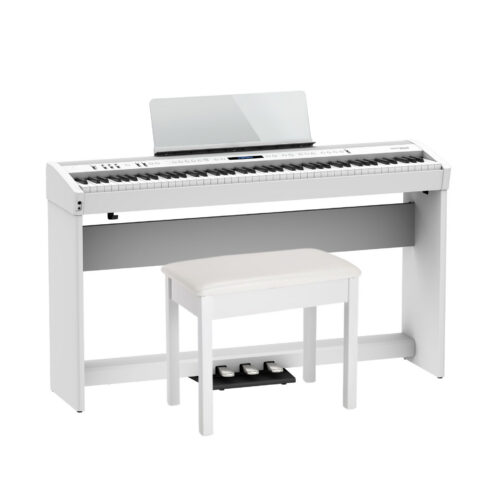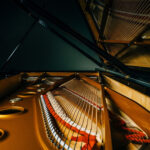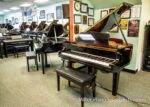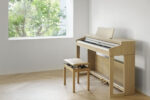Technician’s Minute – November 2025
By: Joel Asher, Lead Piano Technician
As temperatures drop and the heat kicks on, your piano is about to feel it. Every winter, I see the same kinds of seasonal issues – tuning drift, sticking keys, and even cracked soundboards – all caused by sudden changes in temperature and humidity. A little prevention now can save a lot of trouble later.
Quick Winter Piano-Care Checklist
- Target humidity: 40-55% relative humidity (RH). Use a room hygrometer and a clean evaporative humidifier to stay in range.
- Mind the vents. Keep the piano 3-5 feet away from baseboard heaters, fireplaces, and space heaters.
- Avoid direct sun and cold exterior walls; use curtains or blinds to prevent rapid temperature swings.
- Choose the right humidifier. Prefer evaporative over ultrasonic (reduces “white dust”). Place it in the room, not blowing into the instrument.
- Close drafts. Seal door sweeps and window leaks that cause daily humidity swings.
- Use a rug. On hard floors, a rug under an upright or beneath the front legs of a grand helps buffer temperature changes.
- Tune seasonally. Book a winter tuning once the heat has been on for a few weeks (and again in late spring).
- Listen for new buzzes, clicks, sluggish keys, or a sharper/brighter tone than usual -this can indicate it’s too dry.
Why This Matters
In cold weather when indoor air dries out, the wood in your piano shrinks. The soundboard flattens slightly, string tension shifts, and the piano will go out of tune. You may also even notice the action feeling different. Holding a steady humidity level keeps the instrument stable, helps it stay in tune longer, and prevents dryness-related issues that can turn into expensive repairs.
Here are a few of my top recommendations this time of year:
1. Close any nearby vents
When you turn on your furnace, make sure no heat vents are blowing directly toward the piano. That hot, dry air can quickly throw the piano into shock and lead to tuning instability and potentially cause structural damage.
Room Placement Tips for Winter
- Keep pianos 3-5 feet away from heaters and fireplaces.
- Leave a small air gap behind upright pianos on exterior walls.
- On grand pianos, aim the tail away from drafty areas.
- Use curtains or blinds to soften strong, direct sunlight on pianos.
2. Keep a small evaporative humidifier nearby
Pianos are happiest in an environment that stays between 40–55% relative humidity. A small room humidifier is a simple, inexpensive way to keep your piano’s soundboard and action in great shape all winter. Our favorite is an “evaporative” humidifier because they’re inexpensive and cover a large area. If you use an ultrasonic or “mist” humidifier, make sure no moisture gathers on the piano’s surface and that you use distilled water.
3. Check your on-board humidity system (if you have one)
We’ll always recommend controlling the environment in the room the piano is in, rather than trying to control at the piano itself. However, if that’s not possible or your piano already has a humidity control system on-board, make sure it has water before turning it on.
These systems can work well when maintained, but you’ll be amazed how often they’re left to run dry, actually drying out the piano faster and potentially causing damage like cracks or glue separation. Check once a week to ensure the water does not run out.
4. Plan for a seasonal tuning
It’s a great time to schedule your next tuning and service for November or December, once your home has adjusted to the drier winter air. Your piano will sound its best through the holidays and into the new year!
When to Call a Technician
- The piano won’t hold pitch more than a few weeks after tuning.
- Keys feel stiff, sluggish, or noisy (clicks/squeaks).
- You notice buzzes, a wolfy note, or sudden brightness/thinness in tone.
- You’re unsure where to place the piano or which humidifier to buy.
A little attention now helps your piano weather the season beautifully.
If you have any questions about your setup or humidity levels, feel free to reach out. We’re always happy to help.
FAQs
Have your piano tuned at least once per heating season, generally a couple of weeks after tuning on your heater. Plan on twice per year (again in late spring) as part of regular maintenance.
40-55% relative humidity is the sweet spot for pianos. Short dips in humidity can happen – just don’t let it stay too low for several days.
Evaporative. It humidifies without leaving mineral dust behind. If you use ultrasonic, use distilled water and clean often.
For uprights, on an interior wall is preferred, although its less of a concern in newer, well-insulated homes. For grands, away from drafty areas. Don’t place the piano over/next to vents or heaters and out of direct sun when possible.
About the Author
Joel Asher has spent more than 40 years caring for pianos as a piano technician and over a decade serving musicians and families across Middle Tennessee. As our Lead Piano Technician, he’s trusted by hundreds of homes, studios, and institutions who count on his expertise to keep their pianos healthy year-round.
